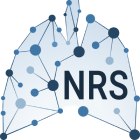⁹⁹mTc-anti-TNF-α antibody for the imaging of disease activity in pulmonary sarcoidosis.
Abstract
Infliximab, a monoclonal antibody directed against tumour necrosis factor (TNF)-α, is used in the treatment of refractory sarcoidosis. However, the clinical response is variable and a tool to select responders beforehand is highly desirable. In this study we evaluated scintigraphy with technetium-99m ((99m)Tc)-labelled infliximab for the imaging of disease activity in patients with pulmonary sarcoidosis.10 patients were studied using single photon emission computed tomography/computed tomography (CT) 6 h and 20 h after intravenous administration of 370 MBq of(99m)Tc-infliximab. Correlation analysis was performed between tissue accumulation of(99m)Tc-infliximab and laboratory parameters (including soluble interleukin-2 receptor and angiotensin-converting enzyme), lung function parameters (including forced expiratory volume in 1 s and the diffusing capacity of the lung for carbon monoxide) and(18)F-fluorodeoxyglucose (FDG) positron emission tomography (PET)/CT.Analysis showed selective and variable accumulation of(99m)Tc-infliximab in the target tissue. Accumulation correlated positively with all four laboratory parameters and negatively with all four lung function parameters, yielding better correlations than serum TNF-α levels or(18)F-FDG PET/CT.(99m)Tc-infliximab accumulation reflects thein situTNF-α expression in an individual patient and therefore provides valuable information on the presence of the biological target for anti-TNF-α therapy.

